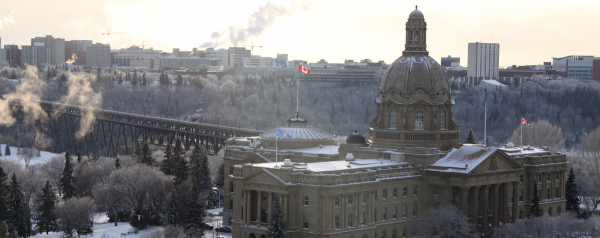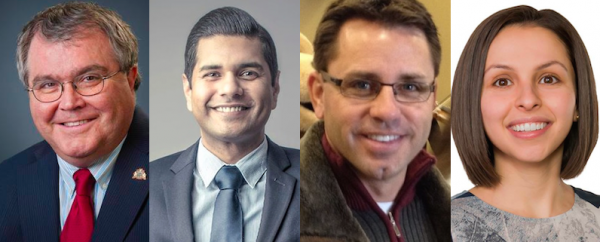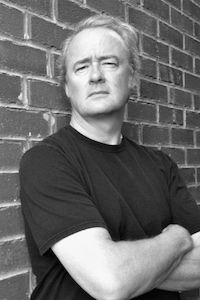A Tale of Two Candidates: How to elect Union and Environmental in Red Deer
By: Jeff Sloychuk
Viewing the results of the Red Deer City Council election, which saw (yet again) a surprisingly high return of so-called “progressive” candidates, readers may well ask: “How did this happen in Red Deer?” Yes, we elected a union leader AND a cultural/environmental activist (who is also the first openly gay councillor ever elected) in Red Deer – but let’s be clear, these are two exceptional individuals, with much more to offer than simply those attributes. In the interest of full disclosure, you should know that I managed the Dianne Wyntjes campaign and assisted the Paul Harris campaign as much as I could. At the outset, I also arranged for the two to have lunch together – which turned out to be the beginning of a close friendship and what will surely be an excellent working relationship within an excellent council team.
A Tale of Two Candidates
The paths from the personal to the political for two new “progressive” city councillors elected to the City of Red Deer’s executive board couldn’t have been more different.
Dianne Wyntjes is an Eckville-born farm girl turned Red Deer-raised veteran of the labour movement, who, having completed her 30th year as a member/staff representative/regional director with CUPE Alberta, decided it was time for a change in her professional life.
Paul Harris, originally from Calgary, is a staple of the Red Deer downtown business community whose stylish home décor shop Sunworks has become a cultural beacon in the revitalizing city core. But Paul was well known long before as one of the anchors of the Red Deer LGBT community, dispensing support, advice, and political acumen around the community scene.
Somehow, two hard-working candidates, one rural-labour, one urban-modern, assembled two great campaign teams that successfully beat out the well-financed, traditional right-wing offerings of Jeffrey Dawson and incumbent Gail Parks.
An observer reading in Edmonton, Calgary, or any other part of Alberta may well be wondering: How?
Getting out the Vote: Traditional vs. SM
The Dianne Wyntjes campaign used every traditional method to dramatic effect, including: a quick and complete front-end postal walk; honk and waves; plant-gating; vote-pitching to unions, Rotary Clubs, organizations and associations; visits to seniors’ homes; and an intensive canvassing and private lawn sign effort, capped off with a softly-worded voice message broadcast gently reminding people to vote and offering rides to the polls.
The Paul Harris camp eschewed campaign signs, didn’t do a postal walked leaflet, did only limited canvassing, and ignored the demon-dialer (voice broadcast messaging). The campaign made use of an extensive personal contact list painstakingly gathered by Paul over years of business activity; highly-interactive and heavily-used Facebook and Twitter platforms; flash mobs at the local Farmer’s Market; a flash mob (with t-shirts) at the Red Deer Rebels game; YouTube videos; and a complex word-of-mouth network to get out the vote.
Both ran approximately $15,000 campaigns, though returns have yet to be filed. Both were elected, Wyntjes with 7,783 votes, Harris with 6,449. Which worked better? The results speak for themselves, but each campaign focused on a specific type of voter – knowingly or not, along the Patrick Muttart/Thomas Flanagan “Zoe” model. Each camp created offerings for its voting blocks (Wyntjes on P3s, Harris on bicycle lanes for city cyclists) and got its respective vote out. Each camp was obviously successful – but to differing demographics.
A New Synthesis
It soon became apparent that Harris supporters were voting Wyntjes, and vice versa. As the two campaigns marched toward completion, Wyntjes improved upon her social media presence – and some older generation volunteers knocked on a few hundred doors for Harris.
Election Day ended with Harris, Wyntjes, and a few supporters from each camp sharing a beverage at the Harris victory party at the Matchbox Theatre, trading barbs, jokes, and tales from the campaign trail. Organized labour meets small business – and they like each other.
From Crisis Comes Opportunity
The crisis that I couldn’t have manufactured better myself came when former city councillor and right-wing Red Deer Advocate columnist Vesna Higham stood up at Red Deer’s Chamber of Commerce forum (traditionally the largest and most important public opportunity to meet the candidates) and demanded to know this, not of the candidates, but of Dianne Wyntjes specifically:
“Over the past decade, which of the political parties, both provincial and federal, have you supported or feel yourself most closely aligned with philosophically?”
Wyntjes, without a trace of hesitation, replied that she had voted in every election since she was 18 and had supported different people and parties over that time. Furthermore, she said, she was a firm believer in keeping municipal politics non-partisan.
Higham then printed that Wyntjes had “skirted” the question, and that only Higham’s apparent protégé Chris Stephan “did not hesitate to answer [her] straight-forward question with a bluntly straight-forward answer. We learned by his response that he is a Conservative.”
Stephan, a fellow member of Vesna Higham’s church (Church of Jesus Christ of Latter-day Saints), had indeed answered that he was Conservative, but that the Wildrose Alliance was worth looking at provincially, causing a murmuring to spread through the room. It is interesting to note that this full response of Stephan’s was not reprinted in the subsequent column, viewable here.
The community reacted. Letters poured into both papers. And before you ask, I knew of only one of them beforehand. The Red Deer Express had this response.
Higham later printed a half-hearted apology of sorts, claiming that she should have phrased the question differently. Nevertheless, the poorly attempted backpedal served only to motivate the progressive vote. The mood on the doorsteps changed from apathy to enthusiastic support, and new volunteers appeared from the sidelines.
What the columns did achieve was the type of polarization that one has come to expect in provincial or federal politics. Higham motivated her core demographic, which turned out for Chris Stephan and his ‘law and order/video cameras in the streets to combat crime’ agenda. Much to Higham’s chagrin I’m sure, however, it also motivated the vote for Wyntjes (and to a lesser extent, Paul Harris).
Finally…
Wyntjes led the crop of new candidates, finishing a strong third out of 16 candidates for the eight council positions. Harris almost didn’t make the cut, coming in eighth – 500 votes ahead of defeated incumbent Gail Parks.
Both Red Deer newspapers endorsed Harris and Wyntjes. Traditional media still has an enormous influence on voter opinion, for good or for ill.
I’m sorry to report to the twittering classes (and I’m one of them) that without Paul Harris’ unique and lengthy record of community service, this campaign would not have been won using social media. Conversely, using only traditional methods, Dianne Wyntjes would have still emerged victorious, though I’m sure the SM helped the candidate’s final totals.
In a city the size of Red Deer (just shy of 100,000 souls), and with limited billboard media available, most candidates will need those election signs so many profess to hate.
Many people will similarly complain about unsolicited phone canvassing – whether it be by volunteer or by demon-dialer. Sorry to say, folks, but it works.
Lastly, any candidates who hope to win without spending time and shoes out on the doorsteps had better give their heads a shake – as Warren Kinsella, my campaign-hack soul-mate – states. Many of us would love to live in a world where online campaigning is the be-all and end-all and voter turnout is a little better than this. But we ain’t there yet, Alberta. Get on the ground, on the streets, and into people’s living rooms. That’s where the best democracy takes place – and that’s where we can elect progressive candidates, even in Alberta.
Jeff Sloychuk received his political education through the Dead Kennedys and Bad Religion, and continued that tutelage under NDP Leader Brian Mason. He was the youngest full-time journalist in Conrad Black’s chain of newspapers with the Alaska Highway News at the age of 17, before returning to Alberta in 2001 to serve in various capacities with the Alberta NDP and organized labour. He now works for the Canadian Union of Public Employees in Alberta and moonlights as a contract political organizer.







